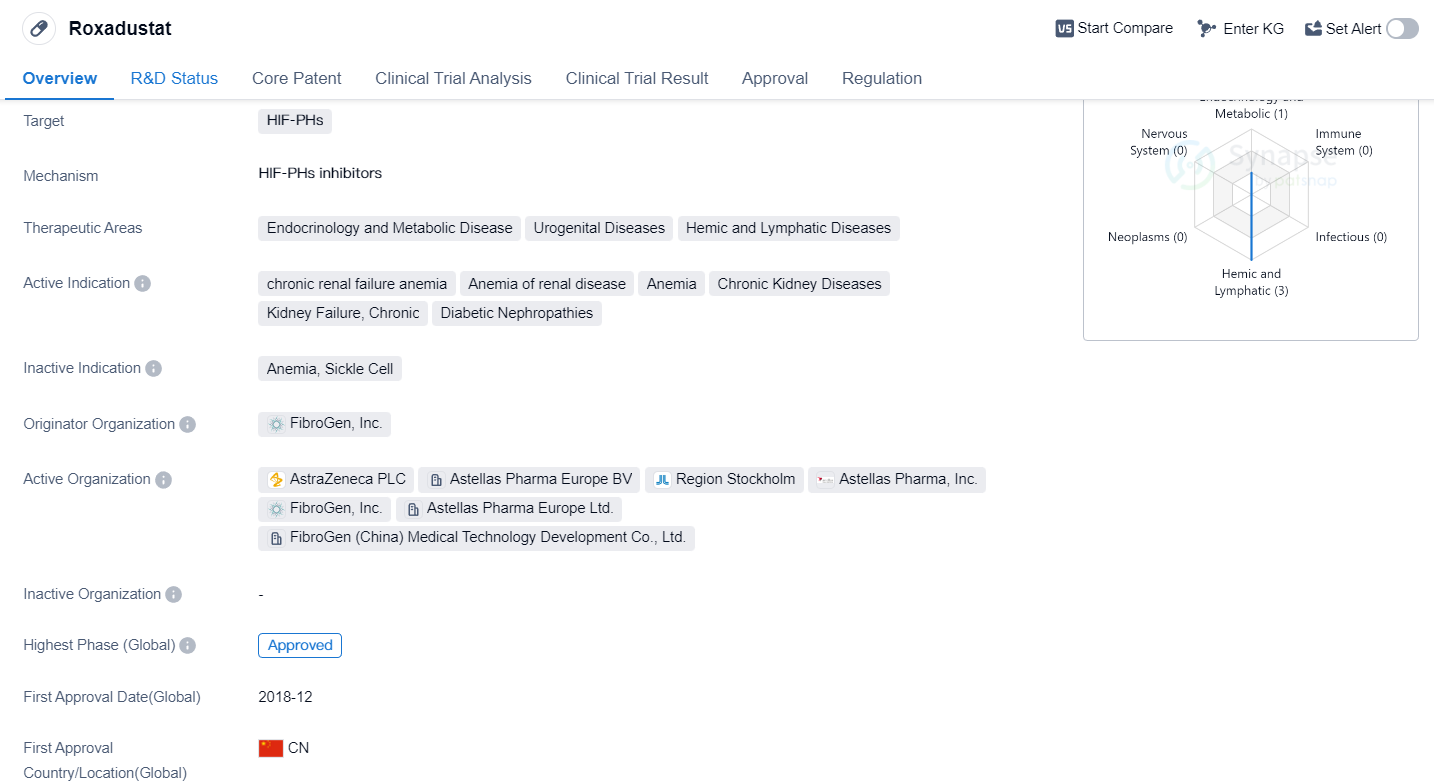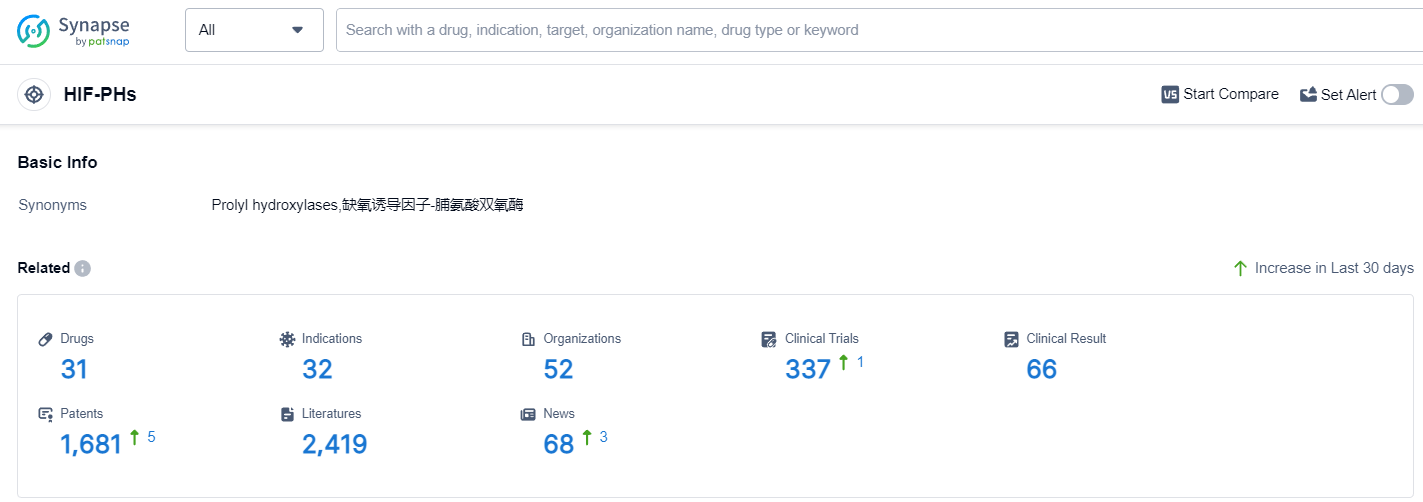A Comprehensive Review of Roxadustat's R&D Innovations and Drug Target Mechanism
Roxadustat's R&D Progress
Roxadustat is a small molecule drug that targets HIF-PHs (hypoxia-inducible factor prolyl hydroxylases). It is primarily used in the treatment of various conditions related to endocrinology and metabolic disease, urogenital diseases, and hemic and lymphatic diseases. The drug has been approved for the treatment of chronic renal failure anemia, anemia of renal disease, anemia, chronic kidney diseases, kidney failure, chronic, and diabetic nephropathies.
The originator organization of Roxadustat is FibroGen, Inc. The drug has reached the highest phase of development globally. It received its first approval in China in December 2018. Roxadustat falls under the special review project regulation.
Roxadustat's mechanism of action involves targeting HIF-PHs, which are enzymes that regulate the production of erythropoietin, a hormone responsible for stimulating red blood cell production. By inhibiting HIF-PHs, Roxadustat increases the production of erythropoietin, leading to an increase in red blood cell production and subsequently addressing anemia associated with chronic kidney diseases.
The drug's small molecule nature allows for better absorption and distribution within the body, enhancing its therapeutic effects.
👇Please click on the image below to directly access the latest data (R&D Status | Core Patent | Clinical Trial | Approval status in Global countries) of this drug.
Mechanism of Action for Roxadustat: HIF-PHs inhibitors
HIF-PHs inhibitors refer to a class of drugs that inhibit the activity of hypoxia-inducible factor prolyl hydroxylases (HIF-PHs). From a biomedical perspective, these inhibitors are primarily used in the field of biomedicine and clinical research. HIF-PHs are enzymes that play a crucial role in regulating the stability of hypoxia-inducible factor (HIF), a transcription factor involved in the cellular response to low oxygen levels.
In normal oxygen conditions, HIF-PHs hydroxylate specific proline residues on HIF, marking it for degradation via the proteasome pathway. However, in hypoxic (low oxygen) conditions, HIF-PHs are inhibited, leading to the stabilization and accumulation of HIF. Stabilized HIF then translocates to the nucleus and activates the expression of genes involved in various processes, including angiogenesis, erythropoiesis, and metabolism.
HIF-PHs inhibitors, by blocking the activity of these enzymes, prevent the degradation of HIF even in normoxic conditions. This leads to the activation of HIF and subsequent upregulation of HIF-responsive genes. These inhibitors have gained significant attention in biomedicine due to their potential therapeutic applications. By mimicking the effects of hypoxia, HIF-PHs inhibitors can be used to treat conditions where increased levels of HIF may be beneficial, such as anemia, ischemic diseases, and certain types of cancers.
It is important to note that HIF-PHs inhibitors are still under investigation and clinical trials. However, they hold promise as a potential treatment strategy for various diseases by modulating the HIF pathway.
Drug Target R&D Trends for Roxadustat
According to Patsnap Synapse, as of 14 Sep 2023, there are a total of 31 HIF-PHs drugs worldwide, from 52 organizations, covering 32 indications, and conducting 337 clinical trials.
The analysis of the target HIF-PHs reveals a competitive landscape with multiple companies actively developing drugs in various stages. Akebia Therapeutics, Inc., FibroGen, Inc., and Zydus Lifesciences Ltd. are among the companies with the highest number of drugs in advanced stages. Approved indications primarily focus on anemia-related conditions, while emerging indications like SARS-CoV-2 acute respiratory disease and COVID-19 are also being explored. Small molecule drugs dominate the drug types, indicating intense competition. Japan, China, and the United States are leading in terms of drug development, with other countries also making progress. This analysis provides valuable insights into the current competitive landscape and future development of target HIF-PHs in the pharmaceutical industry.
👇Please click on the picture link below for free registration or log in directly if you have a freemium account, you can browse the latest research progress on drugs, indications, organizations, clinical trials, clinical results, and drug patents related to this target
Conclusion
Overall, Roxadustat's approval and its target indications highlight its potential in addressing anemia associated with chronic kidney diseases, providing a promising treatment option for patients suffering from these conditions. The drug's approval in China serves as a significant milestone for FibroGen, Inc., the originator organization, and demonstrates their success in developing a novel therapeutic option for patients in need.






